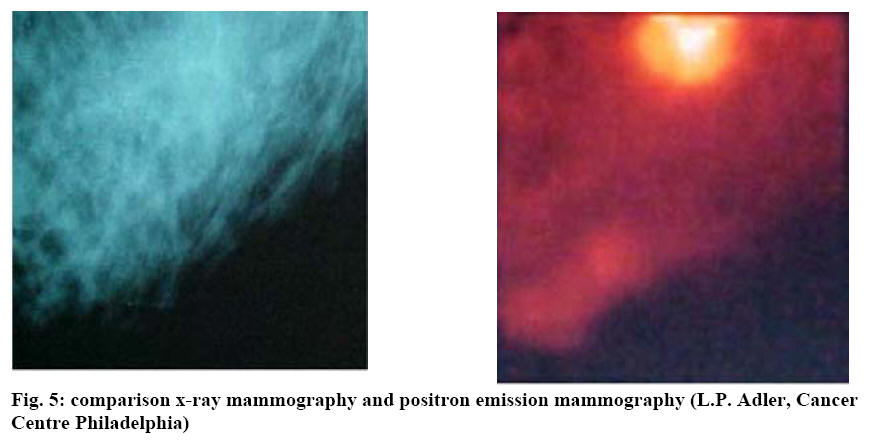
Julia Trummer
The same method used in the CMS electro-calorimeter to study high energy physics and to search for strange new particles is used for medical imaging in positron emission tomography (PET) to study body functions and search for cancer.
But on a much smaller scale!
The same is true for photo detectors, read out electronics, software and the general design of both detector systems.

The method is called scintillation which uses the inherent property of some materials to absorb high energy photons and to reemit visible light.
The crystals used in the CMS ECAL are 1000 times bigger in volume and 400 times heavier then the ones in the PET detector.
The crystal requirements for both fields of study were found to be the same: high density, fast emission, high light yield and high radiation resistance.
A small group of dedicated physicists at CERN are part of an international collaboration, the Crystal Clear Collaboration (CCC). The CCC designed and constructed a small animal PET, the ClearPET, now commercially available by Raytest. The ClearPET is intended for rats and mice to study brain activity or to develop new drugs and monitor their effect in vivo. It has a hitherto unprecedented spatial resolution of 1mm!!!!!
The CCC is now working on a dedicated PET for mammography (breast imaging), the ClearPEM. The aim is to be able to depict small tumors with a diameter of 1mm to 2mm in the breast and axilla region.
The advantages of PEM over x-ray mammography and whole body PETs employed in hospitals at the moment are multifold. Because tumor specific pharmaceuticals are used, the probability of false diagnosis due to the presence of inflammation, which is indiscernible from cancer on a conventional x-ray, is reduced considerably. The spatial resolution of achievable is about 1cm.


In positron emission tomography a small amount of a radiotracer is injected into the patient. A radiotracer is an organic molecule, specific to certain body tissue marked with a radioactive substance that emits positrons – the anti electron. One of the most commonly used is a kind of sugar called FDG – Fluorodeoxyglucose. If a positron and an electron meet they are wiped out of existence and in their place two photons with a very specific energy leave the body in opposite direction. That’s what’s called annihilation and the photons’ energies are 511keV each.
Fig. 2 & 3: ClearPET with rat, CCC Jülich, Germany

Fig. 4: PET scan of the brain from above rat, CCC Jülich Germany

PET When a pair of detectors detects simultaneously one 511keV photon each, a positron must have annihilated on a straight line connecting those two detectors – the so called line of response. The multitude of all these lines of response is used to calculate a slice image in a certain plane.
